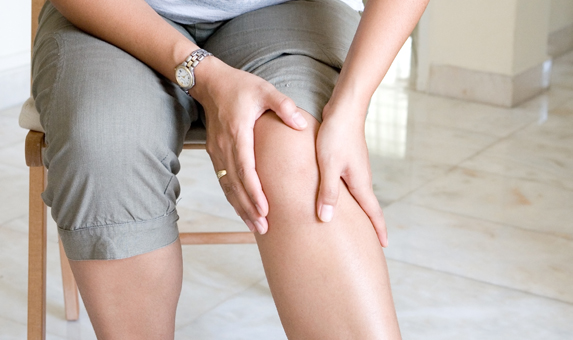Knee Pain – Practical Tips for Knee Care
Knee pain is one of the most common musculoskeletal complaints. With today’s increasingly active society, the number of knee problems is increasing. Often, knee pain is the result of an injury, such as a ruptured ligament or torn cartilage. But some medical conditions can also bring you to the knees, including arthritis, gout and infections.
The main function of the knee joint it so bend and straighten. The knee, more than just a simple hinge, however, also twists and rotates. In order to perform all of these actions and to support the entire body while doing so, the knee relies on a number of structures including bones, ligaments, tendons, and cartilage. Thus it is more vulnerable for injuries or pain.
Depending on the type and severity of damage, knee pain can be a minor annoyance, causing an occasional twinge when you kneel down or exercise strenuously. At the same time knee pain can also lead to severe discomfort and disability.
Many relatively minor instances of knee pain respond well to simple remedies. More serious injuries, such as a ruptured ligament or tendon, may require surgical repair. In the simplest terms, a joint occurs wherever two bones come together. But that definition does not convey the complexity of joints, which provide the body with flexibility, support and a wide range of mobility.
There are four types of joints: fixed, pivot, bail-and-socket and hinge. Knees are hinge joints, which, as the name suggests, work much like the hinge of a door, allowing the joint to move backward and forward. The knees are the largest, heaviest and also the most complex hinge joints in the body. In addition to bending and straightening, they twist and rotate. This renders them vulnerable to damage, which is why they sustain more injuries on average than other joints.
Acute knee pain
Severe knee pain that occurs suddenly (acute pain) is often the result of an injury. Some of the more common knee injuries are:
- Ligament injuries
- Tendon injuries (tendonitis)
- Meniscus injuries
- Bursitis
- Loose body
- Dislocated kneecap
- Joint disorders
- Osgood-schlatter disease
- Iliotibial band syndrome
- Hyper-extended knee
- Septic arthritis
- Chronic knee pain
Sometimes an injury can lead to ongoing (long standing) knee pain. Often, chronic pain results from medical conditions such as:
- Rheumatoid arthritis
- Osteoarthritis
- Gout
- Chondromalacia of the patella, or patellofemoral pain

